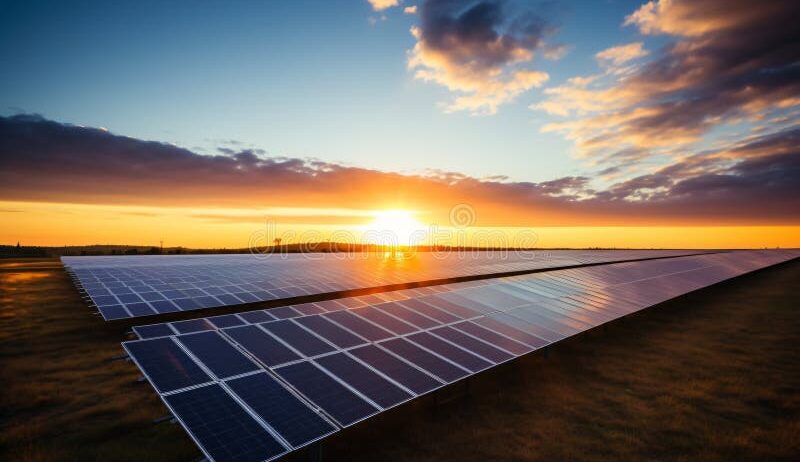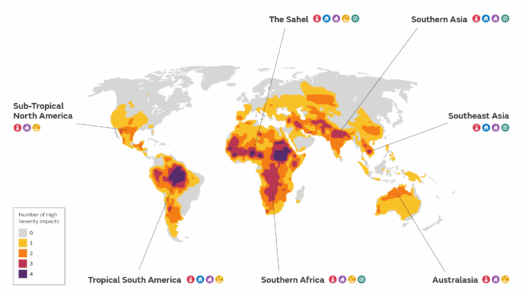Renewable energy stands at the forefront of our fight against climate change. As we navigate the complexities of global warming, one question remains prevalent: Can we truly harness natural forces to mitigate the devastating impacts of climate change? Perhaps the more pressing dilemma is, are we ready to embrace these transformative solutions? Fortunately, renewable energy sources such as solar, wind, hydro, and biomass offer an avenue not only for energy security but also for environmental conservation.
To understand why renewable energy is pivotal in reducing global warming, one must first grasp the fundamentals. Global warming is intrinsically linked to greenhouse gas emissions, primarily originating from fossil fuel combustion. The resultant carbon dioxide (CO2), methane, and nitrous oxide coalesce in the atmosphere, trapping heat. This phenomenon escalates the Earth’s temperature, leading to drastic weather changes, rising sea levels, and disrupted ecosystems. Transitioning to renewable energy offers a pathway towards a cleaner atmosphere.
Solar energy harnesses the abundant power from the sun, converting sunlight into electricity or heat through photovoltaic cells and solar thermal systems. The sun emits an astonishing amount of energy; in just one hour, it beams down enough energy to satisfy the global population’s needs for an entire year. By tapping into this bounteous resource, we can significantly diminish dependence on fossil fuels, ultimately reducing greenhouse gas emissions. For instance, a typical solar panel installation can prevent the release of several tons of CO2 annually, depending on its capacity and the location’s sunlight availability.
Wind energy, another formidable player in the renewable sector, exploits the kinetic energy produced by moving air. Wind turbines, towering and majestic, convert the wind’s motion into electrical energy. Wind power is not only one of the fastest-growing energy sources globally but also plays a critical role in lowering carbon emissions. Various studies suggest that onshore and offshore wind could collectively provide nearly 18% of the world’s electricity needs, all while producing negligible emissions. Furthermore, the aesthetic of wind farms paints a promising picture of a sustainable future, blending technology with nature.
Hydroelectric power, derived from the kinetic energy of flowing water, accounts for a significant share of global electricity generation. Dams capture river currents, converting the gravitational force of falling water into energy. While hydroelectricity is efficient, it is essential to carefully balance ecological considerations. Large dams can disrupt local ecosystems and populations, raising questions about the inherent trade-offs in resource management. Innovative solutions—like small-scale hydropower—offer alternatives that minimize ecological disruption while contributing to energy generation.
The power of biomass energy, sourced from plant and animal materials, rounds out the renewable coalition. Biomass can produce heat, electricity, or biofuels, representing an efficient method of utilizing waste materials. This renewable source manages to sequester carbon, as the plants absorb CO2 during their growth phase. However, biomass production introduces controversy regarding land use and food production. Striking a balance between energy needs and food security remains an ongoing conversation that policymakers must navigate with precision.
As we embrace renewable sources of energy, a critical component becomes the way we store and distribute this energy. Energy storage solutions, such as batteries, play a crucial role in overcoming the intermittent nature of solar and wind energy. Advancements in battery technology are essential for allowing renewable generation to meet peak demands, effectively managing energy supply fluctuations. In addition, the development of smart grids facilitates efficient energy distribution, enabling seamless integration of renewables into existing infrastructure.
Although the benefits of renewable energy are myriad, several challenges loom. Firstly, the transition to renewables often requires substantial investment in infrastructure, technology, and education. The initial costs can be a deterrent for governments and individuals alike. Additionally, established fossil fuel industries, deeply woven into economic systems, may resist the shift toward cleaner energy sources. Policymakers must navigate these intricate dynamics, forging pathways for the renewable revolution.
One strategic approach to tackling these challenges is through governmental policy incentives and subsidies that can spur innovation and adoption of green technologies. Countries like Denmark and Germany have effectively implemented measures that stimulate renewable energy growth while simultaneously incentivizing energy efficiency practices. Furthermore, robust educational initiatives can inform the public and foster a culture of sustainable energy consumption, thereby reducing barriers to transition.
The scientific consensus is clear: to stave off the most detrimental effects of climate change, the rapid adoption of renewable energy must be prioritized. Clean energy technologies undoubtedly provide viable solutions to reduce global warming, promoting a sustainable future for the planet. Both collective and individual actions play critical roles; communities can advocate for the installation of solar panels, support local wind farm projects, or participate in biomass initiatives. The power lies in our collective hands.
In conclusion, as the global community grapples with the ramifications of climate change, renewable energy emerges as a beacon of hope. The path forward is littered with obstacles, yet the potential benefits in terms of environmental preservation and energy security are profound. The playful challenge remains: Are we prepared to embrace renewable energy, leveraging its immense potential to become stewards of our planet? Only through commitment, innovation, and collaboration can we secure a sustainable future for generations to come.






